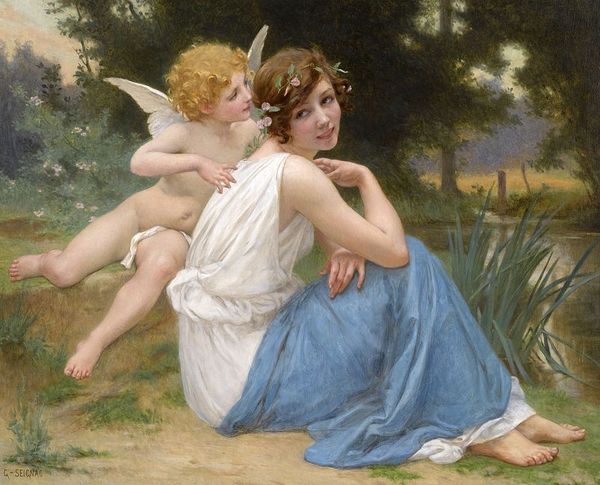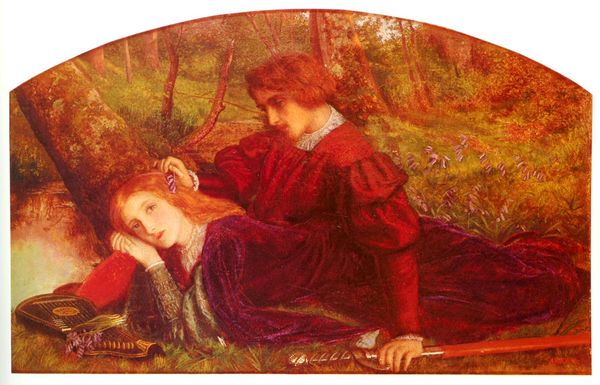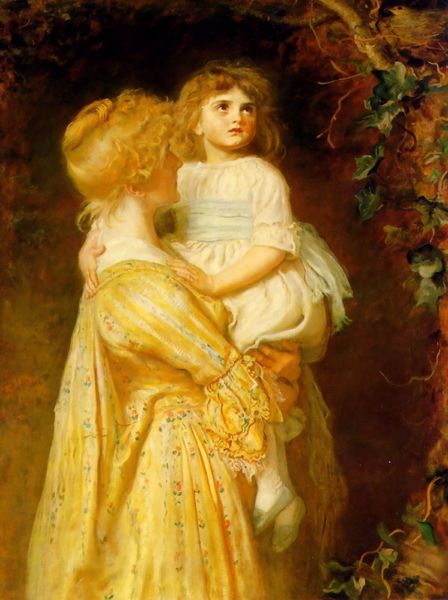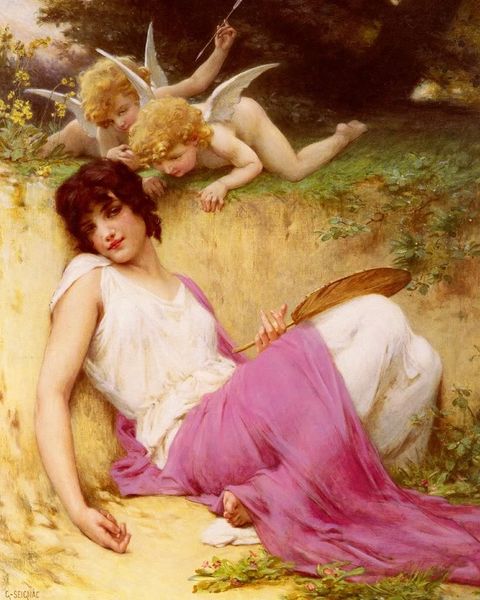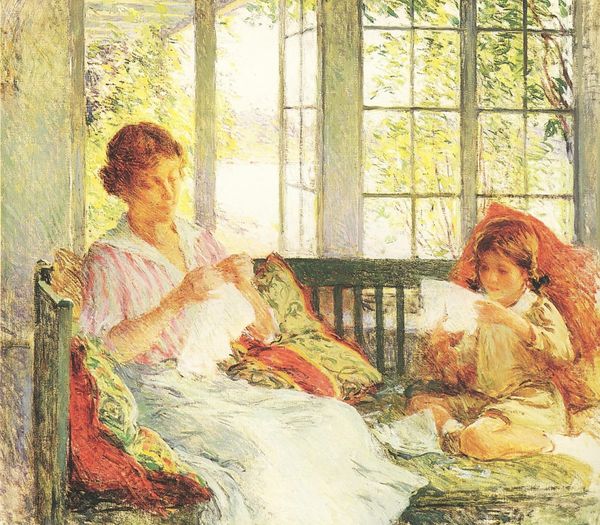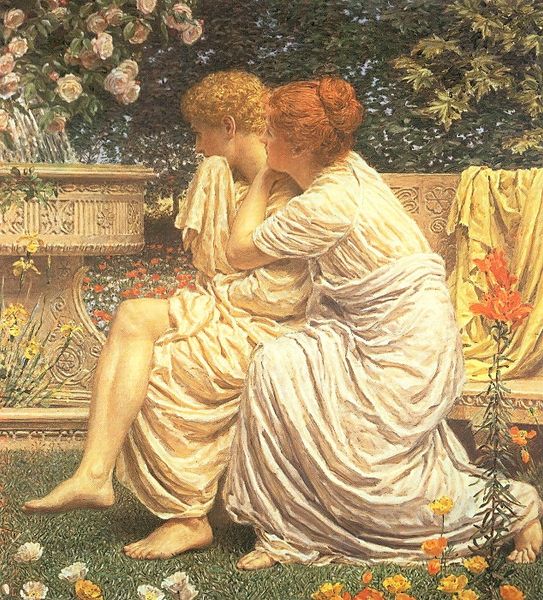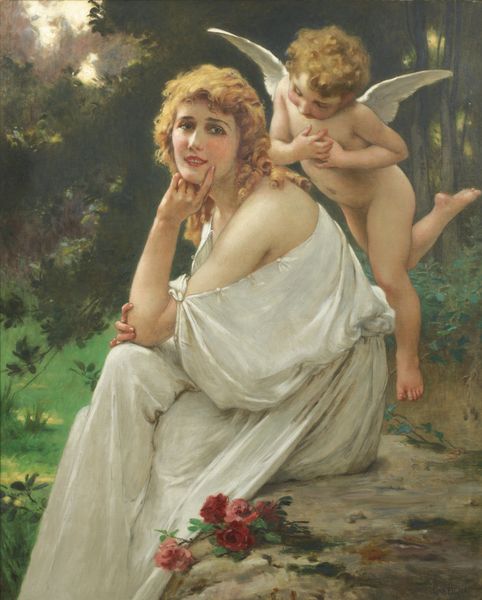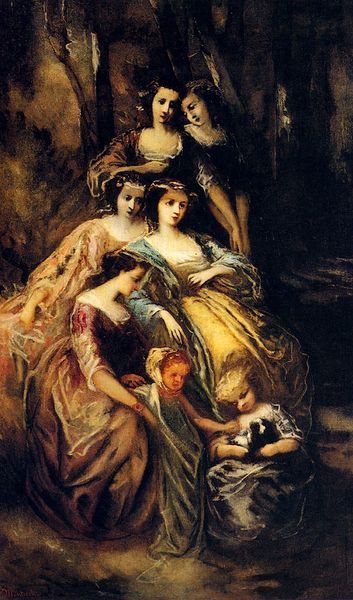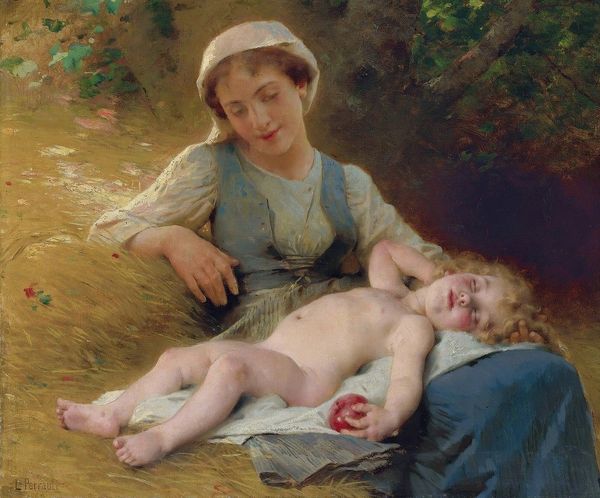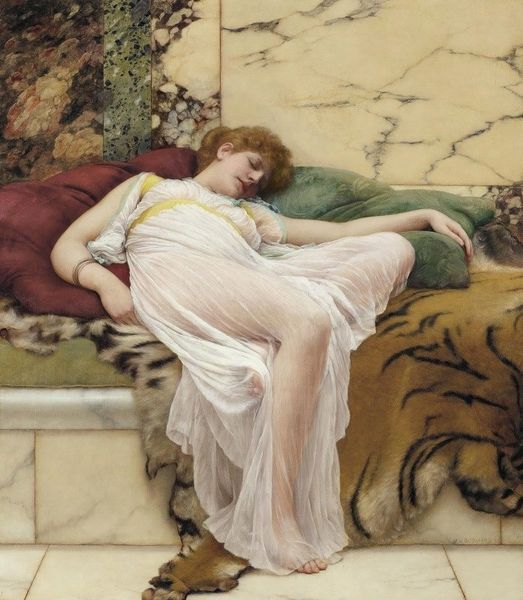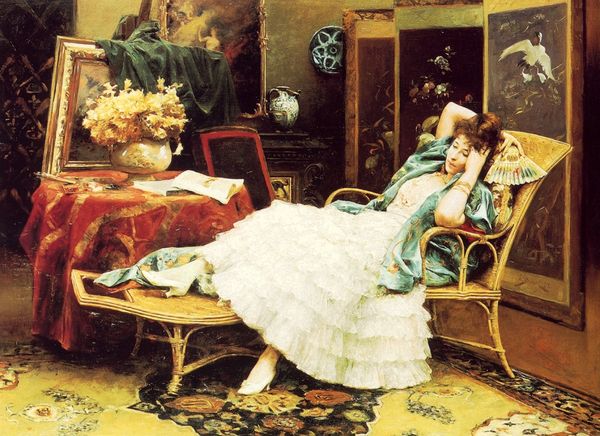
painting, oil-paint
#
portrait
#
painting
#
oil-paint
#
figuration
#
oil painting
#
romanticism
#
genre-painting
#
academic-art
#
nude
#
portrait art
#
fine art portrait
Copyright: Public domain
Curator: Well, hello. Let’s turn our attention to Rudolf Ernst’s work, "Odalisque Avec Puttis," rendered in oil paint. What are your initial thoughts? Editor: The colours are immediately striking; soft, warm, almost confectionary tones that speak to leisure. I'm immediately interested in understanding how these materials convey social standing, in terms of patronage. Curator: Exactly. The material quality does offer a glimpse into the elite artistic tastes and collecting practices of the time. What about the painting process itself? Editor: I'm curious about the choices regarding figuration and subject matter – the reclining nude, almost idealized, along with the presence of putti. Who would have commissioned such a piece and where would they have placed it? This kind of imagery serves particular power dynamics. Curator: It’s likely this catered to a specific market hungry for romanticised Orientalist fantasies. It's fascinating how these idealized representations perpetuated cultural stereotypes and colonial attitudes. Editor: And who exactly benefits from it, and the socio-economic background of those that would use and view it? In order to be viewed and revered it needs institutions, a whole art-viewing public, marketing, reproduction – where did they originate from? Curator: Very insightful points. This begs consideration of production and its cultural impacts, from distribution and the economics of such works, along with it's original audience as we've already mentioned. The material culture surrounding paintings can reveal hidden societal values. Editor: The academic style underscores these notions further; and I suppose it’s those details and implications of "fine art" that are precisely important! What gets defined and maintained, who defines this hierarchy, is a power play, of course. Curator: Yes, so let's think more on the role the museums have historically played here. It's quite complicated to deconstruct now, with such legacy in its history. It presents great challenge of contextualising today’s views, but an imperative undertaking for understanding society itself. Editor: Absolutely, examining works like this through that perspective enriches our understanding of art history as a whole. Curator: Indeed. It's about questioning the narratives we've inherited. Editor: It reveals not only how and why, but for whom.
Comments
No comments
Be the first to comment and join the conversation on the ultimate creative platform.
